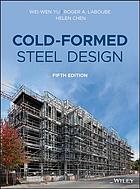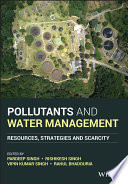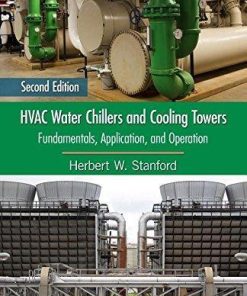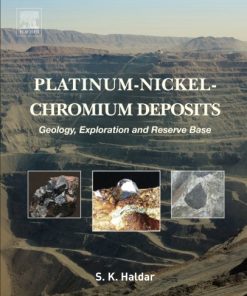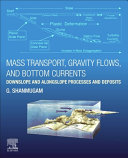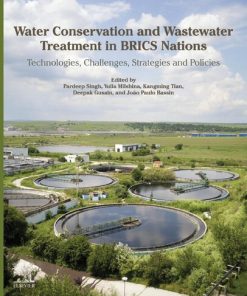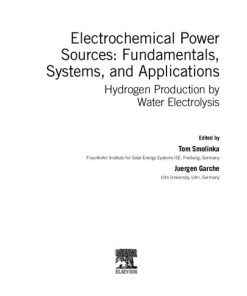Water Formed Deposits Fundamentals and Mitigation Strategies 1st Edition by Zahid Amjad, Konstantinos Demadis 0128230862 9780128230862
$50.00 Original price was: $50.00.$25.00Current price is: $25.00.
Water-Formed Deposits: Fundamentals and Mitigation Strategies 1st Edition by Zahid Amjad, Konstantinos Demadis – Ebook PDF Instant Download/DeliveryISBN: 0128230862, 9780128230862
Full download Water-Formed Deposits: Fundamentals and Mitigation Strategies 1st Edition after payment.
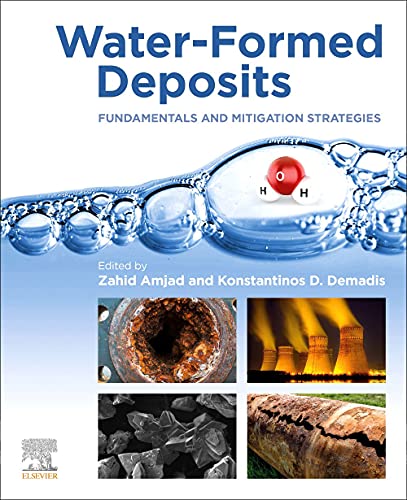
Product details:
ISBN-10 : 0128230862
ISBN-13 : 9780128230862
Author: Zahid Amjad, Konstantinos Demadis
Water-Formed Deposits: Fundamentals and Mitigation Strategies wholly presents the important issue of deposits in aqueous systems, both industrial and biological. By analyzing causes, mechanisms and mitigation strategies, the book helps researchers/engineers/end-users gain a fundamental understanding of the issues underlying deposit formation and mitigation. It covers numerous, fundamental aspects of water-formed deposits, while also giving an applications’ perspective. The book’s goal is to assist the reader in his/her understanding of the important issues of scale formation, while also helping with potential solutions.
Water-Formed Deposits: Fundamentals and Mitigation Strategies 1st Table of contents:
Section A: Fouling and scaling fundamentals
Chapter 1: Water chemistry and its role in industrial water systems
Abstract
Acknowledgments
1.1: Introduction
1.2: Experimental
1.3: Results and discussion
1.4: Conclusions
References
Chapter 2: Mechanisms of scale formation and inhibition
Abstract
2.1: Scale: Definition and impact on industrial processes
2.2: Theoretical background of scaling
2.3: Scaling in flow systems
2.4: Factors affecting the nucleation rates
2.5: Scale inhibition by chemical additives
2.6: Scale-inhibitor interface
2.7: Inhibition performance
2.8: Conclusion
References
Chapter 3: History of phosphorus-containing corrosion inhibitors: From the beginning till the present time
Abstract
3.1: About corrosion and its inhibition
3.2: Phosphorus atoms responsible for corrosion inhibition
3.3: How to increase the corrosion inhibitory efficacy of phosphorus-containig molecues?
3.4: Self-assembled nanolayers with phosphorus content
3.5: Summary
References
Chapter 4: Biomineralization: Applied to biodeterioration and bioremediation
Abstract
4.1: Introduction
4.2: Mineralogical indicators for biodeterioration (MIC)
4.3: Biomineralization as a tool for repair and restoration
References
Chapter 5: Microfouling in industrial cooling water systems
Abstract
5.1: Introduction
5.2: Growth phases of biofilm
5.3: Distribution of bacteria in an industrial cooling system
5.4: Factors influencing biofilm development and microfouling
5.5: Microfouling monitoring techniques
5.6: Microfouling and corrosion
5.7: Bacteria involved in corrosion
5.8: Microfouling or slime control
5.9: Corrosion control and cooling water treatment
5.10: Strategies for cooling water systems
5.11: Conclusion
References
Chapter 6: Particulate matter: Interfacial properties, fouling, and its mitigation
Abstract
Acknowledgments
6.1: Introduction
6.2: Fouling
6.3: Impurities and suspended solids
6.4: Particle transportation, adhesion, and fouling interface
6.5: Factors influencing fouling: Heat exchanger type, geometry, and process fluid
6.6: Fouling models
6.7: Cost imposed due to fouling
6.8: Fouling mitigation
6.9: Membrane fouling
6.10: Corrosion fouling additives
6.11: Mitigation of fouling by mechanical methods
6.12: Fouling mitigation on different heat exchanging surfaces
6.13: Summary
References
Chapter 7: Calcium phosphates in geological, biological, and industrial systems
Abstract
7.1: Introduction
7.2: Calcium phosphates in geological and biological systems
7.3: Calcium phosphates in industry
References
Chapter 8: Nonchemical methods to control scale and deposit formation
Abstract
8.1: Introduction
8.2: Mechanism of PWT—Bulk precipitation
8.3: Magnetic water treatment
8.4: Laboratory tests
8.5: Field tests
8.6: Water treatment using solenoid coils
8.7: Laboratory tests
8.8: Field tests
8.9: Water treatment using RF electric fields
8.10: Water treatment using high-voltage capacitor system
8.11: Validation field tests
8.12: Water treatment using catalytic metals
8.13: Validation studies
8.14: Conclusions
References
Chapter 9: Silica and metal silicate deposits
Abstract
9.1: Introduction
9.2: Cases of silica and metal silicate deposits
9.3: Formation mechanisms
9.4: Inhibition technologies
9.5: Summary
References
Section B: Scaling and fouling issues by industry
Chapter 10: Reverse osmosis: Fundamental causes of membrane deposition and approaches to mitigation
Abstract
10.1: Introduction to reverse osmosis
10.2: RO membrane deposits
10.3: Mitigation of deposits via pretreatment and consequences of inadequate operations
10.4: Deposits enhanced by membrane characteristics
10.5: Performance decline due to deposits enhanced by concentration polarization
10.6: Mitigation of deposits via membrane cleaning
10.7: Summary
References
Further reading
Chapter 11: Cooling water systems: An overview
Abstract
11.1: Cooling water systems overview: Industrial applications
11.2: Treatment system approach
11.3: MOC (mechanical, operational, and chemical) approach
11.4: Water quality types
11.5: Common scales encountered in cooling water applications
11.6: Scale control
11.7: Chemical scale inhibitors
11.8: Individual scale inhibitors
11.9: Corrosion and corrosion control
11.10: Types of corrosion
11.11: Types of corrosion inhibitors
11.12: Carbon steel corrosion inhibitors
11.13: Copper alloys corrosion inhibitors [27–29]11.14: Summary
References
Chapter 12: Formation and mitigation of mineral scaling in geothermal power plants
Abstract
12.1: Introduction to geothermal power
12.2: Silica scales
12.3: Calcium carbonate deposition
12.4: Metal sulfide deposition
12.5: Metal sulfate deposition
12.6: Conclusion
References
Chapter 13: Gypsum scale control by phosphonate additives
Abstract
13.1: Introduction
13.2: Gypsum scale formation mechanisms and the effect of additives
13.3: Phosphorus-based additives and their effect on gypsum scales
13.4: Experimental results on NTMP and PBTC inhibition effect on gypsum scale formation
13.5: Conclusions
References
Chapter 14: Recent developments in oilfield scale control
Abstract
14.1: Introduction
14.2: Common oilfield mineral scales
14.3: Scale control strategies
14.4: Chemical treatments
14.5: Nonchemical treatments
14.6: Summary
References
Chapter 15: Oilfield iron sulfide scale formation and mitigation
Abstract
15.1: Introduction
15.2: Iron sulfide chemistry
15.3: Iron sulfide scale composition
15.4: Iron sulfide scale inhibition
15.5: Iron sulfide scale dissolution
15.6: Summary
References
Chapter 16: Oilfield scale inhibitors: Synthetic and performance aspects
Abstract
16.1: Introduction
16.2: Types of scale inhibitors (SIs)
16.3: Conclusions and outlook
References
Chapter 17: Control of composite oilfield scales and deposits
Abstract
17.1: Introduction
17.2: Types of common mineral scales
17.3: Scale control
17.4: Coprecipitation of composite scale in oilfields
17.5: Composite scale in other industries
17.6: Conclusions
References
Chapter 18: Polymers for industrial water systems: Synthesis, characterization, and applications
Abstract
18.1: What is a polymer?
18.2: Types of polymer
18.3: Synthesis
18.4: Characteristics and characterization
18.5: Deposit formation and mitigation in industrial water systems
18.6: Types of scales encountered in industrial water systems
18.7: Metal ion fouling and mitigation strategies
18.8: Concluding remarks
References
Chapter 19: Polymeric supports for water treatment applications
Abstract
19.1: Introduction
19.2: Functionalized polymers used for the removal of dyes from water
19.3: Removal of organic pollutants from wastewater
19.4: Removal of pesticides
19.5: Removal of oils and organic solvents
19.6: Removal of pharmaceuticals
19.7: Removal of phenol and phenolic derivatives
19.8: Conclusions
References
Chapter 20: Scale in sugar juice evaporators: Types, cases, and prevention
Abstract
20.1: Introduction
20.2: Types and sources of scale
20.3: Case studies of evaporator scale
20.4: Scale management
20.5: Conclusions
References
Chapter 21: Scale control in thermal desalination
Abstract
Acknowledgments
21.1: Introduction
21.2: Thermal desalination processes
21.3: Seawater chemistry
21.4: Scale characterization
21.5: Thermodynamics and kinetics of scale formation
21.6: Control of scale formation
21.7: Future directions
References
Section C: Biological, environmental, and home care
Chapter 22: Scale control in home care applications
Abstract
22.1: Introduction
22.2: Fundamentals of scale
References
Chapter 23: Calcification of biomaterials
Abstract
Acknowledgments
23.1: Introduction
23.2: Experimental methodology
23.3: Results and discussion
23.4: Concluding remarks
References
Chapter 24: Kidney stone formation—Thermodynamic, kinetic, and clinical aspects
Abstract
24.1: Introduction
24.2: Stone formation and crystallization mechanism
24.3: Growth
24.4: Aggregation
24.5: Polymorphs of calcium oxalate crystals
24.6: Influence of additives on calcium oxalate crystallization
24.7: Struvite stone-formation
24.8: Factors influencing the risk of calcium stone-formation in the kidneys
References
Chapter 25: Novel technologies to prevent dental plaque and calculus
Abstract
25.1: The basis of saliva
25.2: Tooth and periodontal tissue
25.3: Periodontal disease and caries
25.4: Guided biofilm therapy (GBT)
25.5: Toothbrushing and flossing
25.6: Dentrifices
25.7: Concluding remarks
References
Chapter 26: Biofouling (macro-fouling) in seawater intake systems
Abstract
26.1: Introduction
26.2: Biofouling growth phases
26.3: Characteristics of the macrofouling
26.4: Anthropogenic activities and invasive species on biofouling
26.5: Fouling prevention strategy
26.6: Biofouling control in industrial systems
26.7: Green technology for cooling water treatment
26.8: Adverse effects of antifouling procedures
26.9: Conclusion
References
Further reading
Chapter 27: Sewer solids affecting microbiologically induced corrosion and/or hydrogen sulfide formation
Abstract
Acknowledgments
27.1: Introduction
27.2: Suspended solids and colloids
27.3: Sewer sediments
27.4: Sediment biofilm
27.5: Factors affecting MIC
27.6: Sulfide control
27.7: Conclusion
References
Chapter 28: Legionella: Causes, cases, and mitigation
Abstract
28.1: Legionella and Legionnaires’ disease
28.2: Legionella in industrial water systems and cooling towers
28.3: Legionella in building potable water systems
28.4: Additional types of non-potable water systems that are susceptible to Legionella colonization and transmission
28.5: Impact of legislation, regulations, and guidance
Summary
References
Section D: Systems support and maintenance
Chapter 29: Global water treatment trends and issues
Abstract
29.1: Introduction
29.2: Water usage
29.3: Global water shortages
29.4: Water quality
29.5: Water-related problems
29.6: Water-related treatment concerns
29.7: Examples of technology advancements
29.8: Water treatment markets
29.9: Closing takeaways
References
Chapter 30: Simulation tools for membrane scaling in reverse osmosis desalination plants
Abstract
30.1: Introduction
30.2: Background information
30.3: Experimental findings—Assessment of key parameters and mechanisms
30.4: Modeling membrane scaling in RO desalination systems
30.5: Development of realistic simulation tools
30.6: Conclusions—R&D priorities
References
Chapter 31: Synthesis, properties, and applications of novel fluorescent-tagged scale inhibitors in water treatment
Abstract
Acknowledgment
31.1: Introduction
31.2: Synthetic approaches to fluorescent-tagged antiscalants
31.3: Inhibition, fluorescent, and other properties of fluorescent-tagged antiscalants
31.4: Applications of fluorescent-tagged scale inhibitors for industrial purposes
31.5: Conclusion
References
Chapter 32: Phosphonate inhibitors: Types, solution chemistry, and applications
Abstract
Acknowledgment
32.1: Introduction
32.2: Phosphonates
32.3: Solution behavior
32.4: Crystallization overview
32.5: Applications
32.6: Conclusions and future prospects
References
Chapter 33: Introducing X-ray photoelectron spectroscopy for corrosion studies: A tool for elucidating interfacial composition and chemistry
Abstract
33.1: Introduction
33.2: XPS fundamentals
33.3: XPS instrumentation
33.4: XPS data analysis
33.5: Corrosion case study
References
Chapter 34: Polyelectrolyte polymers—Types, forms, and function
Abstract
34.1: Synthetic polyelectrolytes
34.2: Polyacrylamides
34.3: Polyacrylates
34.4: Polyamines
34.5: Polydiallydimethylammonium chloride
34.6: Polethyleneimine
34.7: Summary
References
Chapter 35: Mechanisms of scale inhibition derived from a fluorescent-tagged antiscalant visualization
Abstract
Acknowledgments
35.1: Introduction
35.2: Some contradictions and gaps between theory and a real antiscalant behavior
35.3: Research approaches capable to eliminate some gaps
35.4: Major results and discussion
35.5: Tentative “nano-/microdust” -based machanisms of scale inhibition
35.6: Conclusions
References
Chapter 36: Mineral scale deposits—Analysis and interpretation
Abstract
36.1: Introduction
36.2: Wet chemistry methods
36.3: Optical microscope
36.4: Scanning electron microscope
36.5: X-ray diffraction analysis
36.6: Synchrotron radiation wide-angle X-ray scattering
36.7: Summary
References
Chapter 37: Regulatory and compliance issues faced by the water treatment industry
Abstract
37.1: U.S. Environmental Protection Agency
37.2: Occupational Safety and Health Administration
37.3: Purpose
37.4: Compliance issues
37.5: Department of transportation
37.6: Additional information
People also search for Water-Formed Deposits: Fundamentals and Mitigation Strategies 1st:
water formed deposits
deposits formed by flowing water
mineral deposits are formed when the water
water formed scale deposits
how are mineral deposits formed
Tags: Water Formed, Deposits, Fundamentals, Mitigation Strategies, Zahid Amjad, Konstantinos Demadis
You may also like…
Engineering
Politics & Philosophy - Social Sciences
Earth Sciences - The Environment
Pollutants and Water Management : Resources, Strategies and Scarcity 1st Edition
Engineering
Platinum-Nickel-Chromium Deposits. Geology, Exploration and Reserve Base 1st Edition S. K. Haldar
Science (General)




